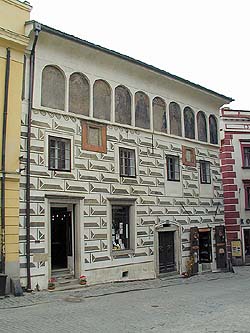Latrán No. 53
Description of the Building:
Two story corner house with a diaphragm arch over Klášterní street.
The house has a sgraffito facade, and there are arcades under the
modern cornice with a painted Renaissance series called"Lifecycle",
which is supposed to represent ten stages in the life of man, from
boyhood to death. The arcades on the side of the house contain
abswing paintings, depicting maybe alchemist scales and Cabala
signs. There are small Gothic windows with angled edges and red
Gothic embossing.
Architectural and Historical
Development:
This is a Gothic house, as evidenced by
the preserved architectural elements (front windows, damaged small
profile portal, stairway and the left wing). It was reconstructed
in several stages during Renaissance. The sgraffito and lunette
paintings were made around 1580. Windows that would correspond to
the sgraffito frames on the side of the house are covered by
Renaissance vaulting and modern truss. The eighteenth century saw
small modifications being carried out - the height of the
individual stories was changed in comparison to the Gothic and
Renaissance state. The 1895 reconstruction had rather a negative
impact on the house. The house was renovated in 1955 and the mural
paintings in 1994.
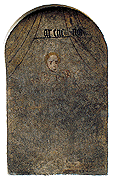
|
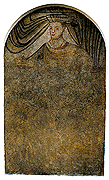
|
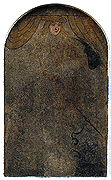
|

|
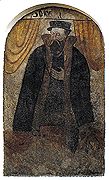
|
||||
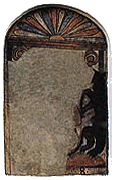
|
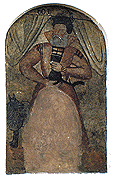
|
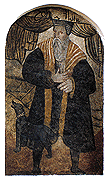
|
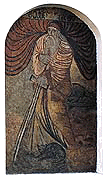
|

|
Significant Architectural
Features:
The house is very valuable because of its front and vaulted rooms.
The most interesting is the mezzanine space next to Klášterní
street with its rich net vaulting with groins. On the second story,
there is a room with a rich neo-Renaissance stucco ceiling. A
vaulted arcade has been inserted into the older joined space.
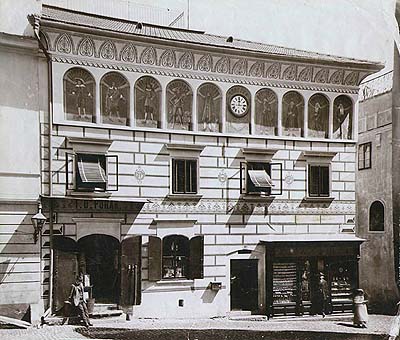
History of the House Residents:
Overseer of the Rosenberg fisheries Wolf lived in the house during
the last two decades of the fifteenth century and in the beginning
of the sixteenth century. He then moved into Latrán
No. 48 and the house was purchased by potter Ondrášek who owned
the house until the beginning of the 1540s. The house was then
bought by maltsman Jakeš (Jakub) Houska. He died in 1555 and his
probably very young wife Anna married within the following five
years with court butcher Šebestián Straubinger who died in 1589.
The figurative facade paintings were probably made at this
time.

|

|
After Straubinger\'s death, the house was acquired by Wilhelm von
Rosenberg who the sold it to his cook Kašpar Lehman. Kašpar
died in 1599, probably during that year\'s plague. The widow
Magdalena married burgher Josef Műllperger from Prachatice, moved
to her husband\'s hometown and sold the house to baker Matyáš
Händl. His family lived here until 1640. A brewery is mentioned to
have been in the house in 1654 but not for a very long time, as it
was there at the beginning of the eighteenth century. An emperor
toll-gatherer in Vltavice named Filip Zäch owned the
house from 1691 to 1726, followed by weaver Karel Jäger. The
Krenauer family owned the house from 1761 to the 1840s. The first
owner, Gottfried Krenauer, was a stocking-weaver; Jan Krenauer who
lived here in the 1820s was a pealer of barley. Businessman Arnošt
Porák lived here at the end of the nineteenth century.
Filip Zäch owned the
house from 1691 to 1726, followed by weaver Karel Jäger. The
Krenauer family owned the house from 1761 to the 1840s. The first
owner, Gottfried Krenauer, was a stocking-weaver; Jan Krenauer who
lived here in the 1820s was a pealer of barley. Businessman Arnošt
Porák lived here at the end of the nineteenth century.
Present Use:
Ceramics
Roseta is on the first floor along with Granat
- garnet jewelry. The second floor is residential.
Significant historic photograph:
The photograph captures the original roof hidden behind the arcade
and attic, with another lower story with small pillars and volutes
and is kept in the District
Museum of National History in Český Krumlov.


